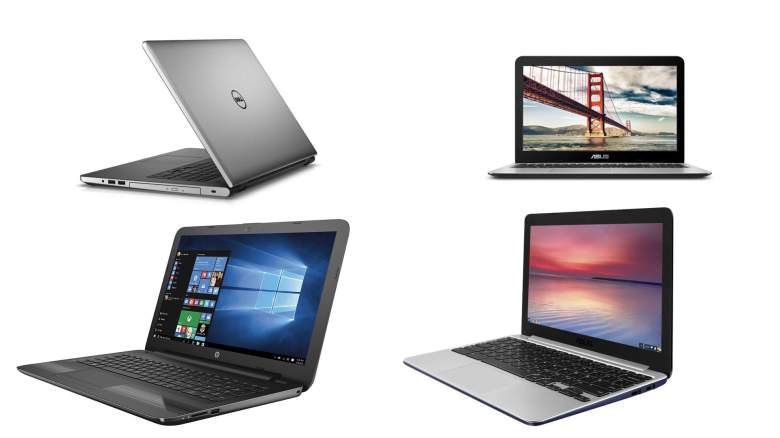
Looking for the best laptops for teens? Our buying guide compares Macbook, Chromebook, and Windows PCs for you or your high school teen.
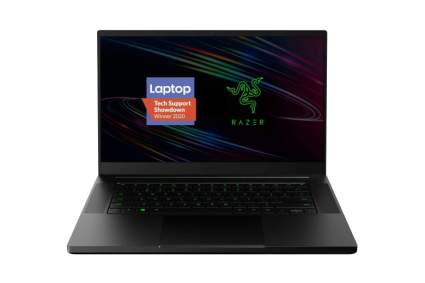
|
Amazon Customer Reviews
|
Price: $1,920.50 Shop at Amazon | Shop now Read our review |
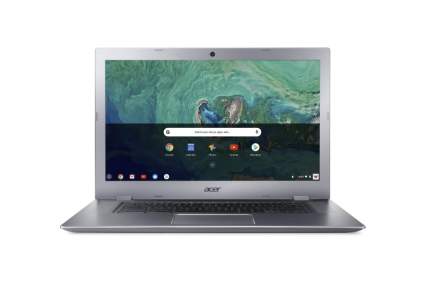
|
Amazon Customer Reviews
|
Price: $327.99 Shop at Amazon | Shop now Read our review |

|
Amazon Customer Reviews
|
Price: $5,738.15 Shop at Amazon | Shop now Read our review |

|
Amazon Customer Reviews
|
Price: $307.00 Shop at Amazon | Shop now Read our review |
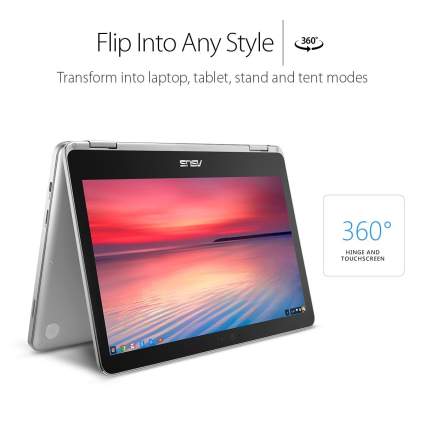
|
Amazon Customer Reviews
|
Price: $599.99 Shop at Amazon | Shop now Read our review |

|
Amazon Customer Reviews
|
Price: $449.00 Shop at Amazon | Shop now Read our review |
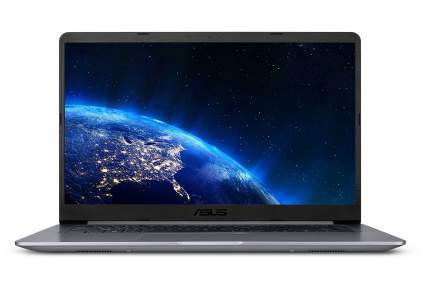
|
Amazon Customer Reviews
|
Price: $799.99 Shop at Amazon | Shop now Read our review |
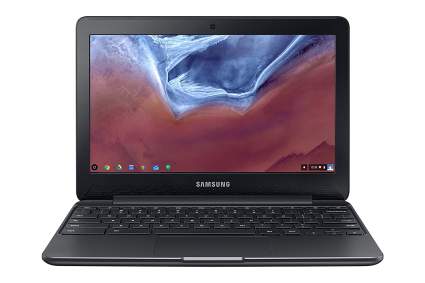
|
Amazon Customer Reviews
|
Price: $184.99 Shop at Amazon | Shop now Read our review |
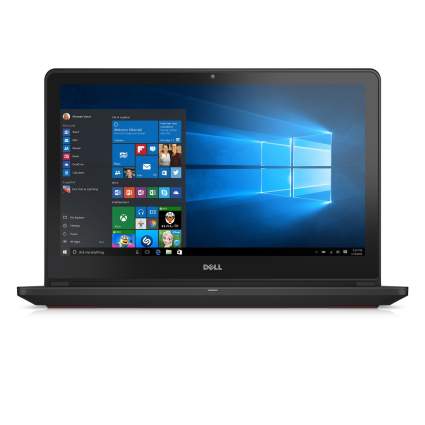
|
Amazon Customer Reviews
|
Price: $1,999.11 Shop at Amazon | Shop now Read our review |

|
Amazon Customer Reviews
|
Price: $1,999.11 Shop at Amazon | Shop now Read our review |

|
Amazon Customer Reviews
|
Price: $1,299.00 Shop at Amazon | Shop now Read our review |
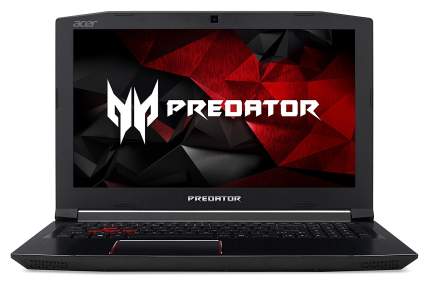
|
Amazon Customer Reviews
|
Price: $1,649.99 Shop at Amazon | Shop now Read our review |
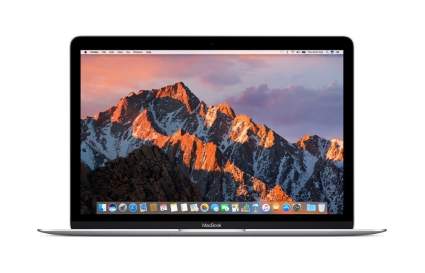
|
Amazon Customer Reviews
|
Price: $1,299.00 Shop at Amazon | Shop now Read our review |
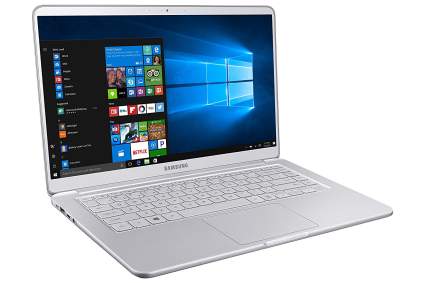
|
Amazon Customer Reviews
|
Price: $648.36 Shop at Amazon | Shop now Read our review |
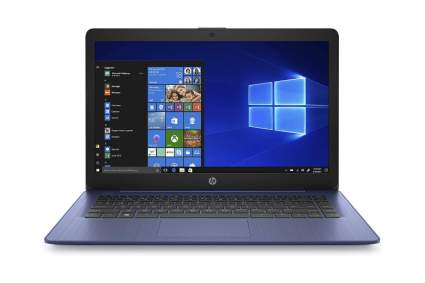
|
Amazon Customer Reviews
|
Price: $160.64 Shop at Amazon | Shop now Read our review |
-
1. Razer Blade 15
Pros:- Super powerful
- Great screen
- Backlit keyboard
- Trusted Brand
Cons:- Backlit keyboard is stylish but shouldn't be a factor overall
- 16GB is enough, but isn't 32GB
- SSD is a great size, but you will eventually need to delete games to make room
Weight 8,78lbs | Screen Size & Resolution 15.6″, 1920 x 1080 pixels | Processor i7-10750H | Hard Drive 512GB SSD | RAM 16GB DDR4 | Video Card NVIDIA GeForce RTX 2070 – 9GB |
The Razer Blade 15 is a safe bet that’s sure to impress even the most cynical kids.
Razer is the cool brand that makes gaming headsets, laptops, and accessories. If you buy Razer, you’re going to impress.
In terms of power, the Razer Blade 15 ticks all the boxes. The RTX 2070 is a beast of a card. Combine that with 16GB of RAM and a meaty 512GB SSD and it’s going to fly.
Of course, 32GB of RAM is the spot everyone wants in a laptop, but unless you’re willing to spend a small fortune, 16GB is more than enough.
Although this shouldn’t be a factor when looking at the best laptops for teens, the RGB backlit keyboard gives this laptop a really premium feel, and looks exceptionally great in low lighting.
-
2. Acer Chromebook 15
Pros:- Super affordable price
- Just enough storage space
- Boots the system in around five seconds
- SSD means this thing is fast
Cons:- Gets really cold when not in use
- Not great for gaming
- Can't transform into a tablet
Weight 5.84 lbs | Screen Size & Resolution 15.6″, 1920 x 1080 pixels | Processor Intel Celeron N3350 | Hard Drive 32GB SSD | RAM 4GB DDR4 | Video Card Intergrated |
Fun fact, the Acer Chromebook 15 is literally what I’m writing this on. You can’t get a better recommendation than that.
In terms of raw power, this ain’t it. But for website browsing and schoolwork, this Chromebook is a solid option for those on a budget.
Seriously, for writing, this thing rocks. For online work, there’s Google Docs. For offline, there’s a free version of MS Word available from the Google Play store.
The only thing to keep in mind with this Chromebook, it’ll slow down as the storage becomes filled. This is an easy problem to fix, though. I have all my music and games installed on a micro SD card, or I use Spotify or Tidal to stream music. With work-related things, there’s Google’s cloud storage. The space issue is easy to work around. Plus 32GB is way more manageable than 16GB anyway.
-
3. MSI P65 Creator
Pros:- Extremely powerful graphics card capable of playing all modern games at great settings
- Awesome for video editing 4K footage
- Excellent multimedia computer capable of processing huge numbers of RAW photos etc.
- Praised as great value
Cons:- Battery life is four-ish hours
- Pricey (but worth it)
- Gets hot when gaming for long periods
Weight 8,28lbs | Screen Size & Resolution 15.6″, 3840 x 2160 pixels | Processor i7-9750h | Hard Drive 1TB Teton Glacier | RAM 32GB DDR4 | Video Card NVidia GeForce RTX 2060 – 6GB |
If you or your high school student is a gamer or 4K video editor, the MSI P65 Creator is the beastly laptop for them.
With a ton of RAM and a top of the line graphics card, the RTX 2060, there’s basically nothing this PC can’t do.
It also has a beautiful display, so all of your games will play perfectly. The processor is a monster and it has plenty of USB ports (four).
Really, the biggest problem with this PC is that it’s a tad on the heavy side at 8.2 pounds. Beyond this, it’s a beast and priced to sell.
In short, this is a great buy for the high schooler who needs it.
-
4. ASUS VivoBook 15
Pros:- Affordable
- More than enough power for most schoolwork
- Really light and stylish
- Decent SSD
Cons:- Video editing is possible, but not recommmended
- Isn't a gaming machine
- No type-C connection
Weight 3.75 lbs | Screen Size & Resolution 15.6″, 1920 x 1080 pixels | Processor i3-1005G1 | Hard Drive 128GB SSD | RAM 8GB DDR4 | Video Card Intel UHD Graphics |
The ASUS VivoBook 15 is a stylish Windows laptop that’s perfect for schoolwork.
This is a smaller laptop for teens. It weighs just 3.75 pounds. That’s Chromebook levels of lightness!
On the speed front, the 10th generation i3 processor is fine. It’s a modern processor, just don’t expect the same speeds as seen in the i7. It is enough, though, and the 128GB SSD is sure to help speed up the Windows-based operating system a lot.
For gaming, there isn’t really enough power here to do much. Basic games will work, but this isn’t a gaming laptop. It’s an affordable solution for students looking to go online or use Microsoft’s operating system to do schoolwork.
-
5. Asus Chromebook Flip 12.5″ (The Macbook of Chromebooks)
Pros:- Convertible touch screen computer with 360 degree hinge
- Great for documents, web browsing, and watching video
- Up to 10 hours of battery life
- Metal body
Cons:- Some apps from the Google Play store are a bit glitchy
- Chrome OS is limiting compared to OSX or Windows
- Chrome OS isn’t perfectly tailored to tablet mode
Weight 3.28lbs | Screen Size & Resolution 12.5″ 1920 x 1080 IPS & Touch | Processor Intel Core M (2.2GHZ) | Hard Drive 64GB SSD | RAM 4GB DDR3 | Video Card Integrated |
This tablet and laptop provides more screen real estate with 12.5-inch and a higher resolution of Full HD. It also boots much more quickly. That said, it has the same amount of RAM and a similar processor to other machines on this guide, so you’re mainly paying for the touch screen features.
All in all, it’s great for people who want the touch screen of an iPad, but still need an easy-to-access keyboard. Plus, it’s easy to set down and use as a display. The battery life is through the roof at 10 hours, and it includes all of the other benefits a Chromebook carries with it, including reliability, and simplicity.
For students who only need Chrome, this is another great machine for Chrome OS and a tablet (with some compromises, Chrome OS is not as good as iOS for a tablet) that’s still very handy. It has a superb build quality and uses a similar processor to a Macbook at almost 1/3 the price. It’s a great deal if you like Chrome OS and want a nice PC to run it.
Find more Asus Chromebook Flip information and reviews here.
-
6. HP Notebook 15.6-inch
Pros:- Three USB ports
- Great for internet use
- Touch screen is nice though not particularly responsive like an iPad Pro
- Has SuperMulti DVD burner
- Speakers are decent
- Fast enough for everyday tasks
Cons:- A small percentage of users had reliability issues with the hard drive and battery
- Some users found keyboard and mouse to be inadequate
- Keyboard is not backlit, can be tough to see in dark room
Weight 4.6lbs | Screen Size & Resolution 15.6″ 1366 x 768 | Processor i3 2.4ghz | Hard Drive 1TB HDD (5400 RPM) | RAM 8GB DDR4 | Video Card HD Graphics 620 (Integrated) |
Now we’re talking about a real PC. This HP notebook boasts a sleek look and solid specs for people who want to store media, watch movies, browse the web, or even do some light Photo Editing. It has three USB ports and a DVD burner. It also has a touch screen. For basic computer use, simple games, Microsoft Office, and similar software, this laptop is bound to make any high-schooler happy.
Find more HP Notebook 15.6-inch information and reviews here.
-
7. ASUS 15.6-inch | Editor’s Choice
Pros:- Praised as great budget laptop
- Sound is solid, great style
- Acceptable for photo editing
- Decent multitasking ability
- Build quality is decent
Cons:- Includes some bloatware (bloatware is unwanted software)
- Many users advise installing extra RAM
- Not good for video editing or gaming
- No backlit keys
Weight 5.1lbs | Screen Size & Resolution 15.6″, 1920 x 1080 | Hard Drive 256GB SSD | RAM 8GB DDR4 | Video Card Integrated |
This ASUS Laptop is a really well-rounded PC with plenty of power for student uses, truly for value, the best laptop for teens. It has a nice screen size and a full HD screen. Plus, its 256GB SSD will keep things nice and snappy for years to come. While the cheaper laptops on this list may offer more bang for their buck now, this computer will last much longer and retain its speed much better. One minor issue, it is a bit on the heavy side at 5.1lbs, but for most, this laptop offers excellent value for the needs of high school students who are editing photos, creating documents, and browsing the web.
-
8. Samsung Chromebook 3
Pros:- Sleek and compact design; lightweight
- Fine for document creation, web browsing, and simple web-based tasks
- Outstanding battery life of ~12 hours
- Solid keyboard and touchpad
- Excellent value
Cons:- ChromeOS is limiting compared to Mac OSX and Windows
- Small percentage of users had issues with reliability
- One user said load times and battery life got worse with age
- Only for casual computer usage
Weight 2.54 lbs | Screen Size & Resolution 11.6″, 1366 x 768 | Processor Intel Celeron N3060 | Hard Drive 16GB SSD | RAM 4GB | Video Card Integrated |
Chromebooks are nothing but cheap, reliable, practical web-browsing machines. Sure, you can’t boot up Photoshop or Overwatch, but where Chromebooks lack in a full OS, they make up for it with their lightweight, stability, and price. Chrome OS is more than enough for many high school students. One can edit their documents with Google Docs, dabble in spreadsheets with Google Sheets, setup Powerpoints with Google Slides.
The Chromebook is a device that will leave many asking, “Why did I think I needed a PC in the first place?” It’s fine for streaming Netflix, but needless to say, it’s not exactly a 4K outputting beast; it will stutter with higher resolutions and is best on its native display or outputting 1080P. Still, for many, this Chromebook is an affordable, lightweight, and convenient computer.
Find more Samsung Chromebook 3 information and reviews here.
-
9. Dell Inspiron 15.6-inch
Pros:- 4K touchscreen that’s portable
- Blazing fast performance with quad core processor, plenty of ram and solid graphics card
- Quiet keyboard with decent speakers
- Three USB 3.0 ports
- Multimedia beast
Cons:- Trackpad can be annoying, one might want a mouse
- Battery life merely average
- On the heavy side
- Ram isn’t DDR4
- Not really for gaming
Weight 6lbs | Screen Size & Resolution 15.6″, 3840 x 2160 | Processor 6th generation i7 | Hard Drive 128gb SSD (OS) + 1TB | RAM 16GB | Video Card GTX 960M |
The Dell Inspiron is a great computer. First of all, it has a stunning 4K screen. It also boasts a discrete graphics processor, the GTX 960m, which isn’t exactly bleeding edge, but will suffice to play modern games at decent settings. It also has 16GB of RAM and an SSD. All of these elements add up to a computer that’s decent for gaming, amazing as a workstation, and even usable for editing photos and 1080P video. It should also suffice for editing 4K but it won’t be smooth (or work with footage at full res). It’s a great deal for users who want a nice laptop that will deliver a lot of quality for almost any use case. 4K is a joy to work on, no matter what you’re doing.
-
10. Dell Inspiron 17.3-inch
Pros:- Boasts 10 finger multi-touch support
- Built-in SD card reader
- Praised as great computer with little to no bloatware
- Powerful enough for photo and audio editing, 720P video editing
- Can play some games at decent settings
- Backlit keyboard with battery life up to 7 hours
Cons:- Hard drive is slow at 5400RPM
- Huge and heavy
- Not really a gaming PC, but has the profile of one
- A small percentage of users had issues with battery reliability
Weight 7.58lbs | Screen Size & Resolution 17.3″, 1920 x 1080 pixels | Processor i7 – 6500U | Hard Drive 2TB 5400RPM | RAM 16GB DDR3 | Video Card Radeon R5 4GB |
This Dell Inspiron model makes a few changes from the PC above. For one, it has a larger screen, but the screen has less resolution. It also has a slower hard drive, a two terabyte one at 5400RPM. The good news is: it retains 16GB of RAM and adds in a real graphics card, a Radeon R5. This means a few things. One, this PC is definitely capable of playing modern games at decent settings. It’s also decent for editing video. Still, with its HDD being 5400 RPM, it may be a bit less snappy overall than the PC above. If you’re planning on editing video, this is a slightly better choice, but it’s definitely better for gaming. As a workstation, it’s an inferior PC to the one above, but not by much. This is a great PC for a casual student gamer who needs something solid to work on too.
Find more Dell Inspiron 17.3-inch information and reviews here.
-
11. Asus ROG (G531GT)
Pros:- Lots of power
- SSD and HDD
- More affordable
Cons:- Graphics card is better on the Razer Blade 15
- Somewhat chunky design
- Isn't the most powerful machine by a wide margin
Weight 5.9lbs | Screen Size & Resolution 15.6″, 1920 x 1080 pixels | Processor i7-9750H | Hard Drive 512GB SSD / 1TB HDD | RAM 16GB DDR4 | Video Card GeForce GTX 1650 – 6GB |
If the Razer Blade is a little outside of your price range, a solid alternative is the ASUS ROG.
Here we’ve got very similar specs in certain departments. The ROG matches the Blade 15 in the SSD, RAM, and processor department. If it’s for gaming, mid to high is very achievable.
Where this laptop differs, aside from price, is when we factor in the extra 1TB HDD and the lesser graphics card. The Razer Blade is the one to go with when it comes to gaming, but for everyone else, you could save yourself some money and go with the ASUS ROG.
Don’t get me wrong, the ROG will game without any problems, but the extra power of the Razer Blade 15 may come into play if you’re looking to play games on the best settings or edit videos.
-
12. Acer Predator
Pros:- Praised as best gaming laptop in the $1000 price range
- Backlit keyboard is a nice touch
- Can edit 4K video and photos very effectively
- Speakers are loud with decent WiFi
Cons:- One user felt need to reinstall Windows, felt process was annoying
- Computer can get very hot
- No G-sync on the display
- Monitor is on the dim side
- Screen feels a bit cheap
Weight 5.95lbs | Screen Size & Resolution 15.6″, 1920 x 1080 | Processor i7 7700HQ | Hard Drive 256GB SSD | RAM 16GB DDR4 | Video Card GTX 1060 6GB |
The ACER Predator is a bit more well-rounded that the above PC. It boasts a more powerful processor and an SSD. On top of that, it also has GTX 1060 6GB.
This will give a $2500 Macbook Pro a run for its money and is absolutely a better machine for gaming. As a workstation, it’s solid, with a decent resolution. If you or your student needs a gaming PC or to edit 1080P video, this computer will do the job. Plus, with this much performance, it’s a smooth PC to work on.
-
13. Apple Macbook 12-inch
Pros:- Keyboard feels great with second generation butterfly mechanism
- Tiny and beautiful laptop with outstanding build quality
- Great for web browsing and document editing
- 10/10 ergonomics with a wonderful trackpad and responsive OS that’s flawlessly stable
- Splendid battery life
- In order to hook up devices, one needs dongle that connect to USB 3.0
Cons:- Not good for any kind of editing, laptop isn’t powerful
- One user hated keyboard and couldn’t type above 50 WPM on it
- Slow for anything but basic use; almost comparable to a ChromeBook
- Dongles are pricey for using this device’s one USB port
Weight 3.4lbs | Screen Size & Resolution 12″ 2304 x 1440 | Processor 1.2ghz M3 | Hard Drive 256GB SSD | RAM 8GB | Video Card Intel HD 615 (integrated) |
At this point, the Macbook is practically a fashion statement. Boasting a nice resolution screen (higher than 1080P, but nowhere near 4K), and very middle of the road specs, this Macbook’s best feature is Mac OSX.
By many people’s appraisal, the best operating system in the world. Still, despite this advantage, this Macbook is best-suited to documents, web-browsing, and light photo-editing. There’s not much power underneath the hood. Of course, with Mac, you do get more: more reliability, more battery life, more stability, and a longer lifespan. What you don’t get is more performance for gaming or editing. For many, however, this is a beautiful, lightweight, and effective way to study and get the job done. It’s just not a whole lot more than a fancy Chromebook in terms of power. The keyboard is fast and responsive, but some do say it takes getting used to.
Find more Apple Macbook 12-inch information and reviews here.
-
14. Samsung Notebook 9 – 15-inch
Pros:- Fast charging mode allows for 20 minutes of charge to yield 21 hours of use
- Quiet fans and keyboard, light and portable; trackpad as good as Macbook Air
- Has a MicroSD slot, praised for great performance for photo editing, documents, and web browsing
- Thin bezel, and thinner than the macbook air
- Built-in fingerpruint reader; USB port plus USB 3.0 port
- Full-sized HDMI port, 10 hours of battery life
Cons:- A tiny percentage of users had issues with blue screen of death
- Some had issues with touch screen
- Speaker quality is poor
- Some users had issue with keyboard
Weight 2.7lbs | Screen Size & Resolution 15″, 1920 x 1080 | Processor i7, 2.7ghz | Hard Drive 256GB SSD | RAM 16GB | Video Card 940mx |
If the Macbook appeals to you, but you want a lot more power, this Samsung Notebook is almost as pretty and much more powerful Boasting 16GB of RAM, an i7 processor and an acceptable video card, it’s able to play modern games at low to decent settings, edit photos and video (1080P), and be an overall decent user experience.
Sure, it lacks OSX and doesn’t look quite as pretty, but it does have a neat quick charging feature (see Pros below), and has way more power for different uses.
Find more Samsung Notebook 9 – 15-inch information and reviews here.
-
15. HP Stream (Renewed)
Pros:- Decent screen
- Different colors available
- Can customize the power
Cons:- Base unit isn't all that great
- This one's renewed
- Better options elsewhere on here
Weight 3.4 lbs | Screen Size & Resolution 14″, 1366 x 768 pixels | Processor N4000 | Hard Drive 32GB eMMC Teton Glacier | RAM 4GB DDR4 | Video Card Intergrated |
So. The HP Stream isn’t the most powerful monster on this guide by a pretty wide margin. However! You can customize the machine as you see fit.
Want a pink shell? Done. Want an i3 processor instead of the N4000? Easy.
With a lot of laptops, you get what the company selling them says. With this one, though, you’re free to add or remove what you really need.
I’d personally still recommend sticking with one of the other options on here, but if your kid is intent on having a baby pink laptop, this one’s for them.
Further Reading
Buying a laptop for teens, high schoolers, and you people is simple. All one needs to know is what RAM stands for, how a hard drive works, and what exactly a microprocessor does. Only kidding, buying a laptop really is easy.
All you need to do is ask yourself two questions: what do I need a machine to do and how fast? For the most part, for simple word processing, document creation, and web browsing, all of the laptops on this list will do. That said, having a high-resolution screen and fast processor not only enables things like watching movies, it can also make working easier and much more fun.
Our guide above has three basic types of computers: Chromebooks (web-browsing and documents only), PCs (ranging from a basic machine to a gaming computer), and a Macbook (good for stability, documents, and web-browsing).
SSD vs HDD - Which is Better?
Neither and both. Hard-drives (HDD) have a much larger capacity than Solid State Drives (SSD). SSDs, however, organize data in a way that speeds everything up. Your operating system, games, or programs will all benefit from being installed on an SSD.
The downside, some video games come in at 100GB, so if you're rolling with an SSD capacity of 500GB, that's going to fill up much faster than a 2TB HDD.
My rule? Games or apps you use the most and the operating system go on the SSD, everything else goes on a regular HDD.
Chromebook vs Windows Laptop - Which is Right for You?
This all comes down to what you plan on using the system for. If it's for schoolwork, it depends on what the school work is. If it's writing, math, science - you know, general school stuff - a Chromebook will do all that with ease.
Where Chromebooks fall flat on their faces is when you try to do anything a little more niche. Video or photo editing and gaming is much easier on Windows laptops by a pretty clear margin (so long as the laptop is powerful to do that).
If it's browsing online, listening to music, or writing, a Chromebook is a brilliant affordable alternative. If you're after something with a little more power, then it's worth going with a Windows-based laptop.
It's also worth considering what they'll be needing down the line. If your child is 15 and may be wanting to try out streaming or YouTube in a few years, it's best to futureproof and sink money into a high-powered Windows laptop rather than saving some money now then needing to replace it later on. Believe me, I've been there!
See Also: